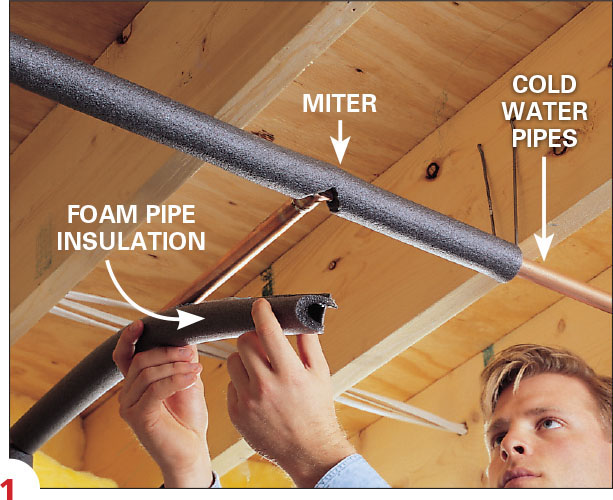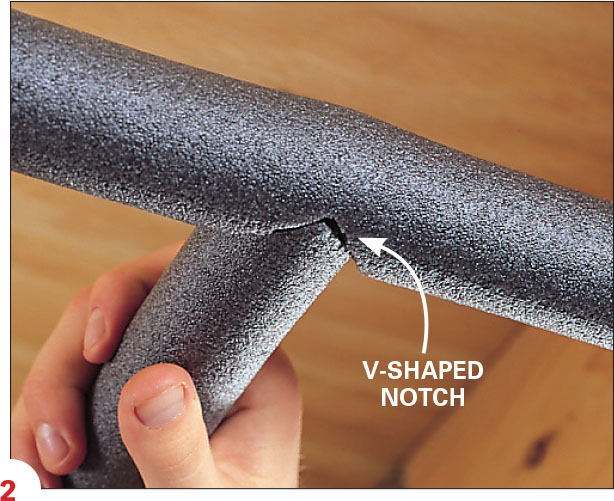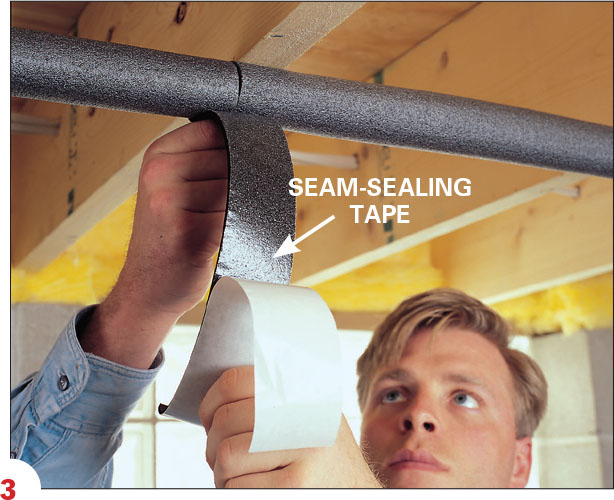
If your cold water pipes are sweating more than you are on these hot summer days, here’s the simple cure. Run down to the local home center, lumberyard or hardware store and pick up some foam pipe insulation.
The deluxe version we purchased has a peel-and-stick seam along its length. Less expensive insulation lacks this feature, but you can tape the seam to seal it. We also bought a roll of peel-and-stick seam sealer to wrap around the joints between tubes. The insulation is available in different sizes, so you’ll need to measure the diameter and total length of the pipes you intend to insulate.
The insulated tubing keeps the warm, humid air from condensing on the cold pipes. Insulating hot water pipes offers little advantage beyond the possibility of getting hot water sooner at faucets far from the water heater.

1. Measure the length of pipe and cut insulation to length with a serrated bread knife.

2. Miter the corners and cut a V-shaped notch where pipes intersect at a “T,” using a utility knife.

3. Seal joints between lengths of tubing with special “peel-and-stick” seam-sealing tape or foil duct tape.